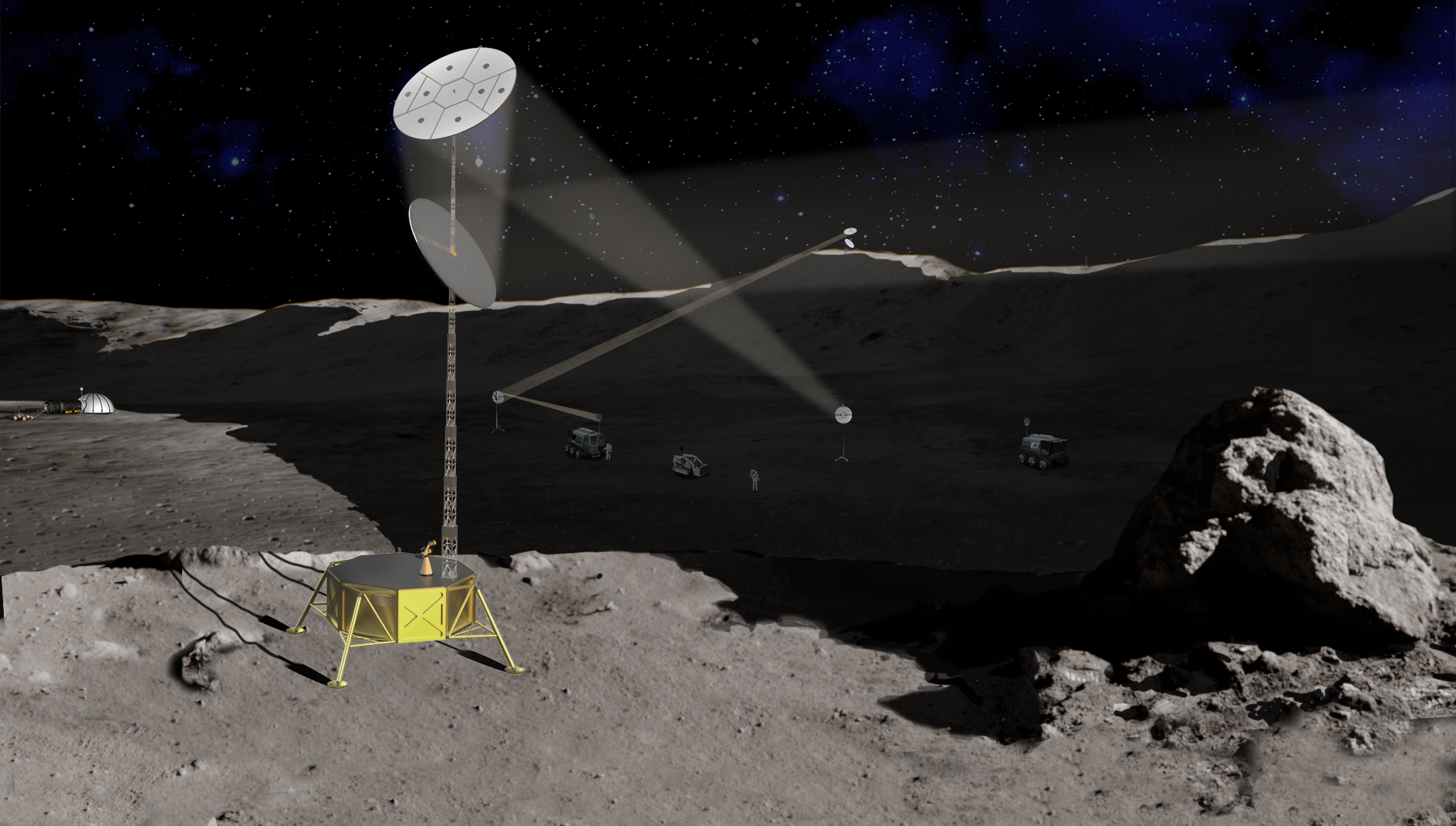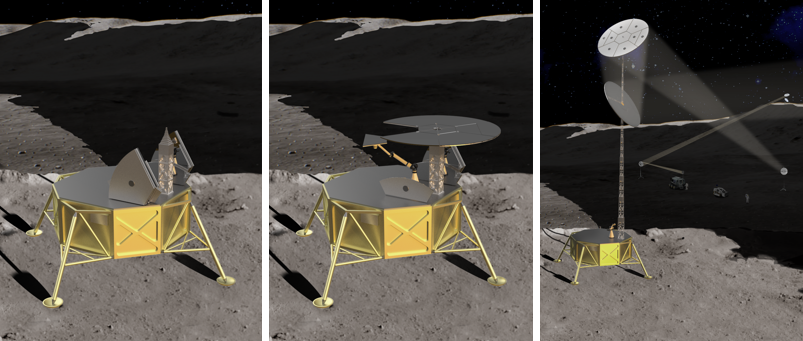
Light Bender could use robots and autonomy to deliver sunlight to solar panels in dark areas of the Moon. These areas are important to explore since they could hold resources needed to sustain a lunar economy. Credit: NASA
Expanded exploration of the Moon—including with NASA’s Artemis missions—will uncover opportunities all over the lunar surface, and some regions require a reexamination of how we live and work. Those places are often remote, dim, cold and they are in permanent shadow.
But Maxar’s robotics engineers are working to light it up.
Areas kept in the dark by mountains and crater walls could hold scientific discoveries for resources like frozen water. NASA is already planning uncrewed missions to the Moon, including the South Pole where areas have access to the sunlight in high terrain but are dark in lower areas. Batteries and other power systems will help power missions operating in the shadows, and Maxar is working with NASA for a more sustainable solution called Light Bender.
“Part of what we’re doing is conceptually simple, reflecting sunlight to a solar panel located in the dark,” said Sean Dougherty, Maxar Chief Robotics Architect and lead for Light Bender. “Where it gets complex is doing that without humans involved. We’re leveraging investments in autonomy to study how NASA can use robots to assemble and deploy a set of reflectors that keep sunlight focused on a solar panel operating in the shadows. It’s never been done before.”
The Light Bender project, awarded in May 2023 under NASA's Announcement of Collaboration Opportunity, is an outgrowth of a NASA Innovative Advanced Concept (NIAC) study awarded to NASA’s Langley Research Center in 2021. This project will advance the Light Bender concept by showing the ability to robotically assemble the Light Bender system on the lunar surface, with an Earth-based demonstration in 2025. The project is a partnership between Maxar and NASA Langley, with NASA Langley focused on Light Bender’s structural design, while the Maxar team will be focused on robotic operations. The partners will then combine to conduct the demonstration at NASA Langley facilities.
How it works
The approach involves a telescoping mast, or a long pole, that will rise approximately 20 meters. A robotic arm will assemble two 10-meter reflectors on different parts of the mast. The bottom reflector will catch the sun’s rays and reflect them to the secondary mirror, which passes the light on to the receiver. Each mirror will move to track the Sun and an end user independently, using both pan and tilt.

In this artist’s rendering of Light Bender, the first two scenes show the robotic arm assembling one of the system’s two reflectors. The third scene shows the fully assembled and deployed system beaming sunlight to a solar panel that’s set up in a dark zone. There is also a secondary Light Bender system shown in the background to convey how multiple systems can be set up for more complete coverage. Credit: NASA
“The Light Bender reflectors will be the largest ones autonomously assembled in space,” Dougherty said. “Ten-meter mirrors would nearly span the width of a tennis court, and we’re studying how to build it autonomously. It’s no easy feat, but we have the expertise to do it.”
Experience
Maxar is no stranger to in-space assembly. By the time Light Bender is scheduled to land, Maxar would already have robots operating in space and on the Moon (in addition to the company’s six robotic arms currently on Mars):
- As part of NASA’s On-orbit Servicing, Assembly, and Manufacturing 1 (OSAM-1) mission, Maxar is building the spacecraft and robotic arms. One of the arms will assemble a 3-meter radio frequency reflector as a demonstration. (Watch a demo of how that will work in the video below.)
- Maxar is also building the Sample Acquisition, Morphology Filtering and Probing of Lunar Regolith (SAMPLR) arm, which will be the first robotic arm on the Moon in more than 50 years. Maxar finished testing in January, and the hardware is ready to be delivered for a Commercial Lunar Payload Services flight.
Shaping the future
Expanding the ways to power missions on the Moon will help astronauts and autonomous missions. Programs like Light Bender will have lasting impact.
“Robotics are key to realizing the goals of expanded lunar exploration,” Dougherty said. “We don’t currently have construction crews on the Moon or Mars, so robots will have to step in. By using these technologies to build infrastructure, robotics increase human safety and reduces the amount of people it takes to accomplish missions.”
While reflecting solar energy is the primary objective for Light Bender, this project will certainly light the path for future space robotics as we explore deeper into our solar system.
Robotic trailblazers
From Earth’s orbit to Mars, Maxar’s robotic expertise is helping us do more in space.
Learn more